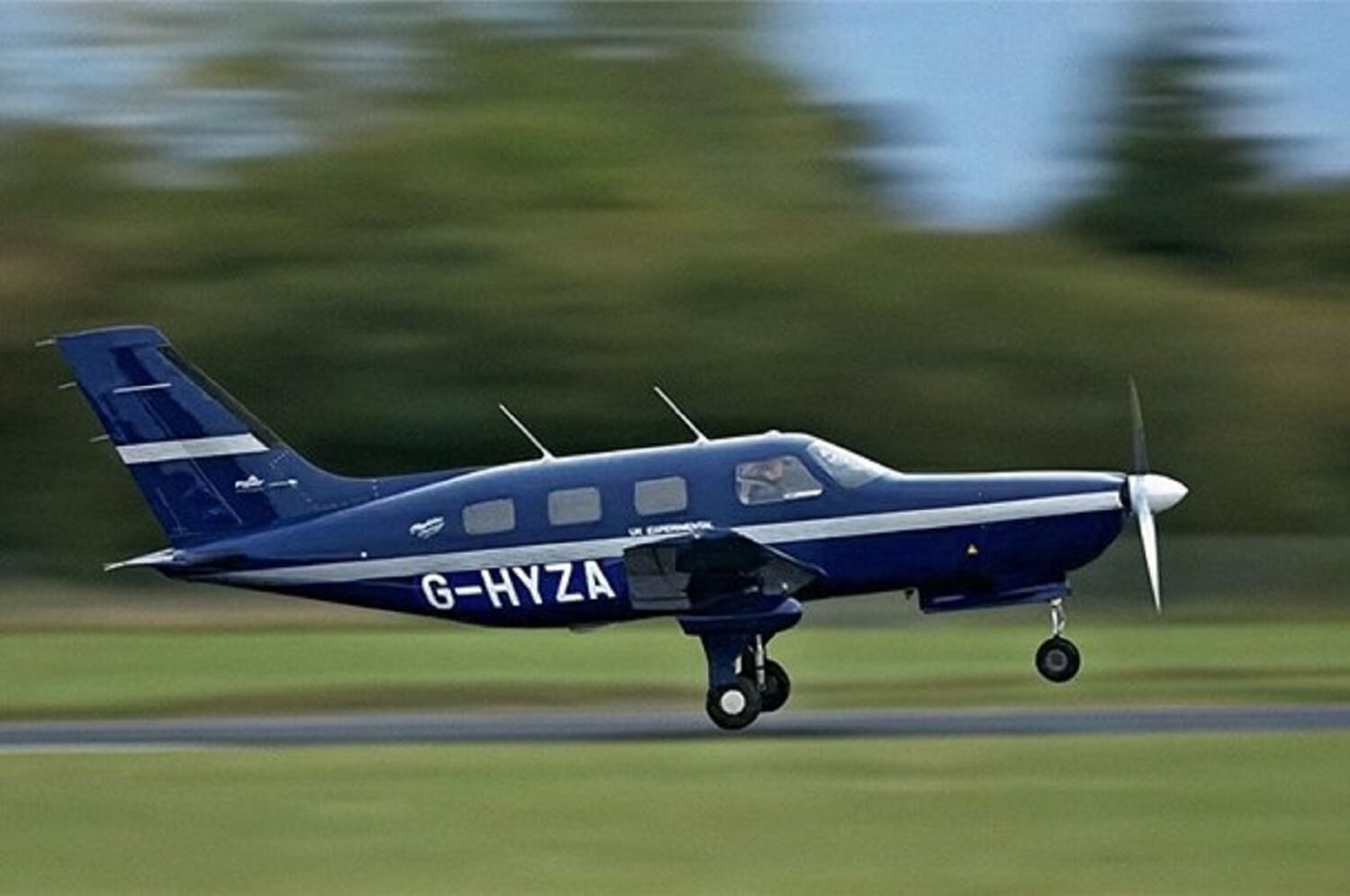Stay Up to Date
Submit your email address to receive the latest industry and Aerospace America news.
Hydrogen cells could free electric aviation from charging from the grid
Dozens of air taxi companies are building and testing electric aircraft that run on lithium-ion batteries, but those who want to expand their services to regional distances will need to overcome the size and weight drawbacks of today’s lithium batteries.
For that reason, the advanced air mobility industry is showing growing interest in hydrogen fuel cell technology. In these systems, oxygen from the air is fed into stacks of fuel cells to create a reaction that separates electrons from hydrogen molecules, producing water vapor and also current that can turn the wheels of automobiles or the propellers or rotors of an aircraft.
Among those working on fuel cells are Joby Aviation of California, whose lithium-ion powered electric air taxis have accumulated thousands of flight hours, and ZeroAvia, the California-United Kingdom-based company that envisions hydrogen-powered aircraft someday dominating the skies, many with its hydrogen-fuel-cell powertrains aboard.
As promising as fuel cells might be, the aviation industry must solve a host of issues, top among them being to cleanly produce large amounts of hydrogen while making this hydrogen available to operators whose aircraft are designed to accommodate the necessary hydrogen tanks, with the weight of those tanks and that of the fuel cell stacks being a paramount concern.
“ZeroAvia has gone down the path of hydrogen electric instead of [lithium-ion] batteries because these batteries won’t scale to the power and weight that you need to decarbonize the industry,” says James McMicking, the company’s chief strategy officer.
The company intends to sell its ZA2000-RJ powertrains to airlines, including United, which has invested in the company and announced plans to purchase 100 of the powertrains. United plans to retrofit existing aircraft such as 50-seat Bombardier CRJ 550 regional jets. So far, ZeroAvia says it has test flown a Piper Malibu five-passenger plane with batteries and a hydrogen-fuel-cell powertrain. Next, “within a matter of weeks” it plans to demonstrate the technology in the United Kingdom on a 19-seat Dornier 228 turboprop aircraft.
On the matter of ground infrastructure, McMicking believes storing hydrogen and loading it onto aircraft will prove to be more efficient than charging aircraft through the electric power grid.
“When a battery powered aircraft needs to charge up, you plug a massive gray cable in and draw from the grid for 10 to 30 minutes. That’s a nightmare for electrical infrastructure,” he says. “But with hydrogen, you can produce it slowly” from water and methane “using solar or wind energy, and store it on site” at an airport or vertiport, McMicking says.
At the moment, the air transport industry is embracing sustainable aviation fuels, or SAFs derived from renewable carbon sources, but McMicking views these fuels as a short-term solution that will never be available in large enough quantities to fuel the global industry. He also predicts hydrogen-fuel-cell powertrains will be far less expensive to maintain since they operate at relatively lower temperatures, around 180 degrees C, compared to conventionally fueled turbine engines.
On the weight question, ZeroAvia’s subsidiary, HyPoint, is working with the main company to lower the weight of the fuel stack through innovations in materials.
Regarding environmental impacts, water vapor can create contrails that exacerbate global warning, but ZeroAvia says it is working on a method to ensure that the water from its powertrains will form droplets that willl be large enough to descend quickly.
Matthew Kubesh, a research engineer at Southwest Research Institute in Texas, credits the automobile industry for laying the groundwork for the aviation sector’s interest in hydrogen-fuel-cell technology.
“The reason we’re seeing more interest from the aviation industry is that there have been big advancements, especially in fuel cells for transportation in the past 10 years, and a lot of that can be credited to Toyota,” Kubesh says.
He points to the hydrogen-fuel-cell powered Toyota Mirai, a $49,500 midsize sedan with an advertised range of 647 kilometers before more hydrogen must be added.
“The most daunting thing for aviation to transition to hydrogen is just capital costs upfront to build the production and distribution infrastructure,” he says. “But we’re seeing more people jump on board now, because I think there is a viable future for making and storing hydrogen.”
And he says fuel cells probably are not well suited to quick short trips, like some air taxi companies are anticipating.
“Fuel cells don’t like to start-stop operations. That’s typically a mode of failure after a while,” Kubesh says.
Toyota happens to be Joby’s largest investor, having pumped $400 million into the air taxi startup. Joby committed to pursuing fuel cell technology for future aircraft in 2021 when it bought Germany-based hydrogen electric company H2Fly.
Joby’s founder and CEO, JoeBen Bevirt, says the company’s lithium-ion batteries are very efficient and make sense for short trips, but he says the company intends to expand to longer routes and will need hydrogen fuel cells for those. Joby also believes fuel cells will last much longer than batteries, and that it can select green sources of hydrogen to ensure decarbonization.
“As you want to increase the range of the aircraft, you’re carrying a lot more batteries in order to get a certain range and your payload is getting smaller and smaller,” Bevirt says. “With fuel cells, you’re storing energy in hydrogen, and then you’re converting that energy into electricity. That is the right way to move aircraft for medium and long distances.”
About paul brinkmann
Paul covers advanced air mobility, space launches and more for our website and the quarterly magazine. Paul joined us in 2022 and is based near Kennedy Space Center in Florida. He previously covered aerospace for United Press International and the Orlando Sentinel.
Stay Up to Date
Submit your email address to receive the latest industry and Aerospace America news.




